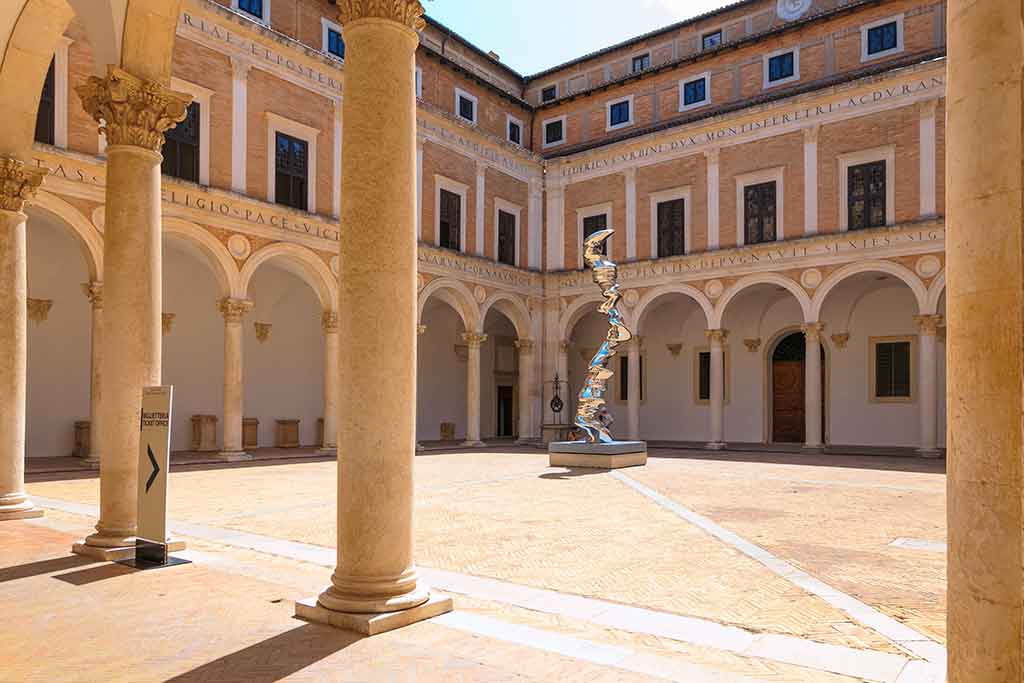Welcome
to Urbino Italy. If you’are planning to visit Urbino for your next trip and you are
looking for the best places to visit, here you’ll find tips and suggestions of most
popular point of interest and activities not to be missed in Urbino and surrounding.
Travelers will appreciate this italian town with
his rich historical and artistic heritage, local culture and environment. Discover the monuments, buildings, natural
treasures and all the details that characterize Urbino and its territory. Share and suggest a place you've
visited.

Ducal Palace of Urbino
Located in a mountainous area between the Apennines and the Adriatic Sea there is the treasure city of the Renaissance, Urbino.
Famous for being the hub of Renaissance culture and art, the ancient city is a UNESCO World Heritage Site. It is also the hometown of two great artists such as Bramante and Raphael. Urbino is located on two hills in the center of which, in the lower part, there is the center of the city with Piazza della Repubblica. From this square there are numerous uphill avenues that connect to the main attractions of the city. I climb from Piazza della Repubblica up Corso Vittorio Veneto and arrive in Piazza Rinascimento which has inside the Cathedral of the city completely razed to the ground in 1789 by a tremendous earthquake.
The same square overlooks the Doge's Palace, a maximum example of Renaissance art. I visit, inside the building, the National Museum of Marche, on the second floor, I can admire the area where the Emperor Frederick lived with his family. In addition to this fascinating area, in its large interiors, there are works of great value such as The Paintings by Piero della Francesca.
Back in Piazza della Repubblica, I take a steep road located northwest and enter Via Raffaello, where at some point, is the native house of the famous painter Raphael. Inside it is exciting to visit her bedroom still left intact today. On a wall you can see a wonderful fresco that Raphael drew at the age of 15, at whose sight we are deeply excited.
written by Kenneth Harrison - Last update: 15/10/2021
This guide has been translated automatically through a third party service. Visititaly offers these automatic translations to help site visitors, however the automatic translations may contain inaccuracies, errors or inaccuracies. You can contact us to report inaccuracies or errors and we will check the translation.